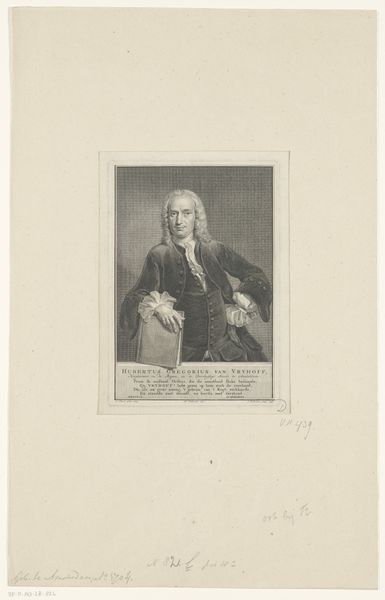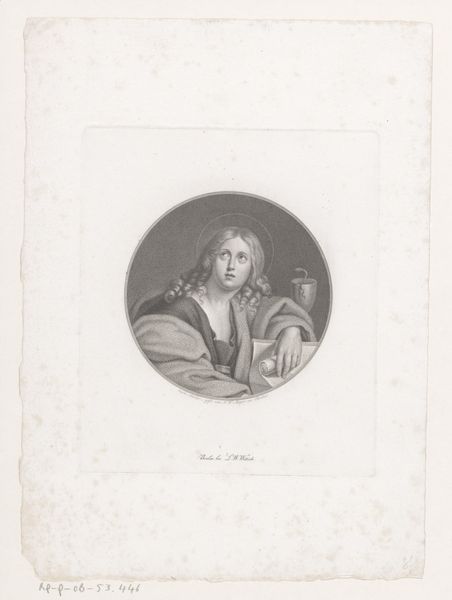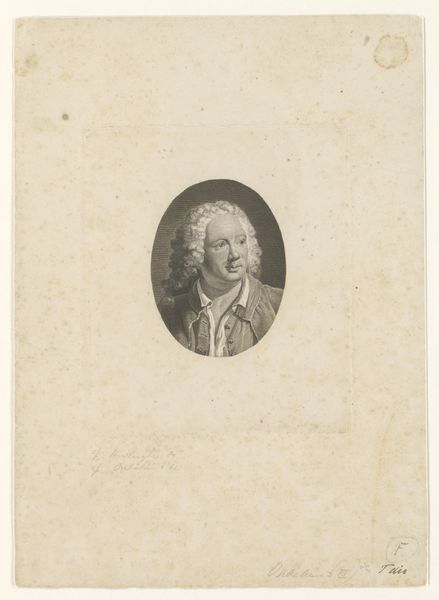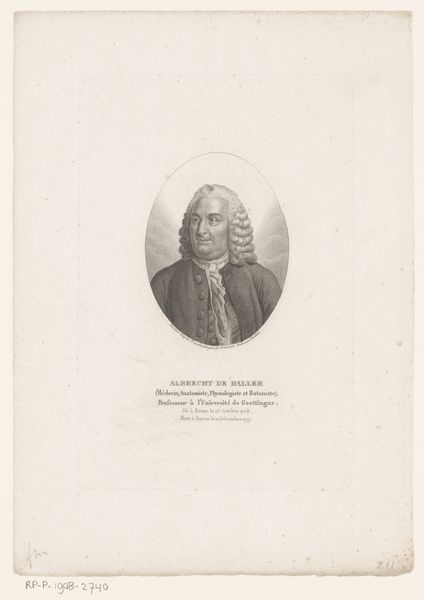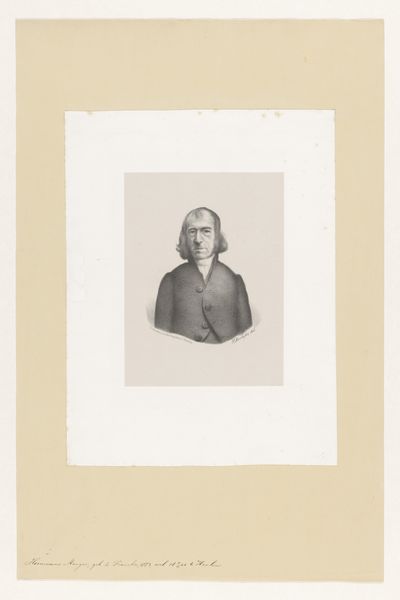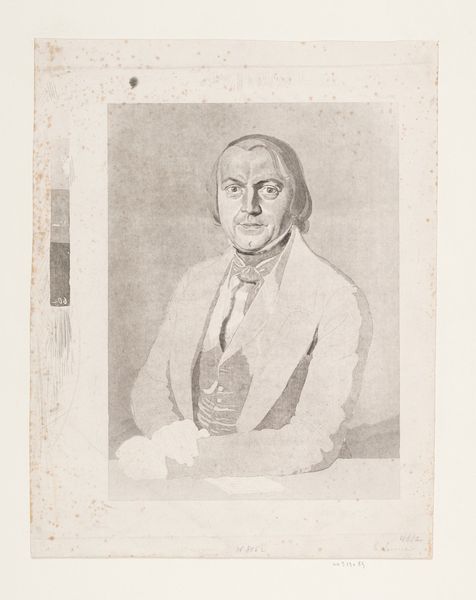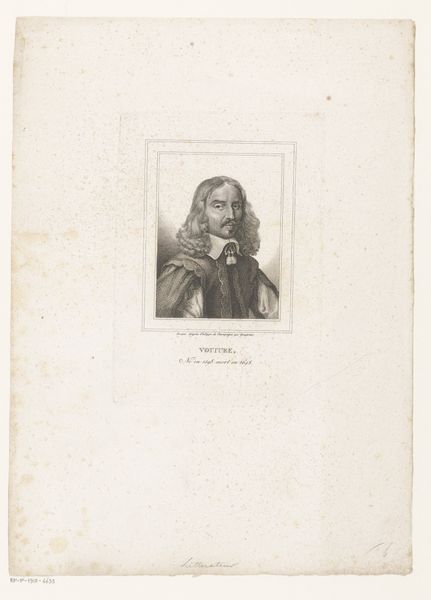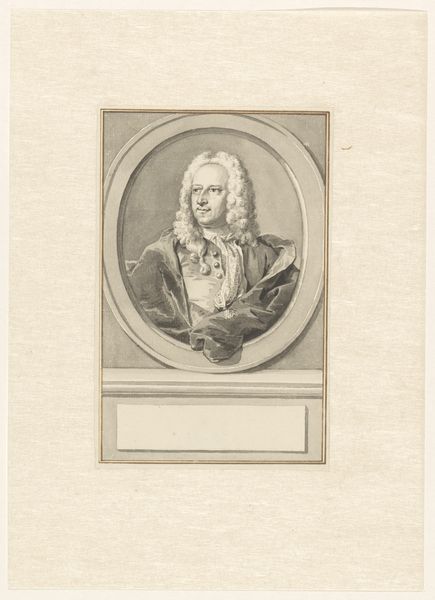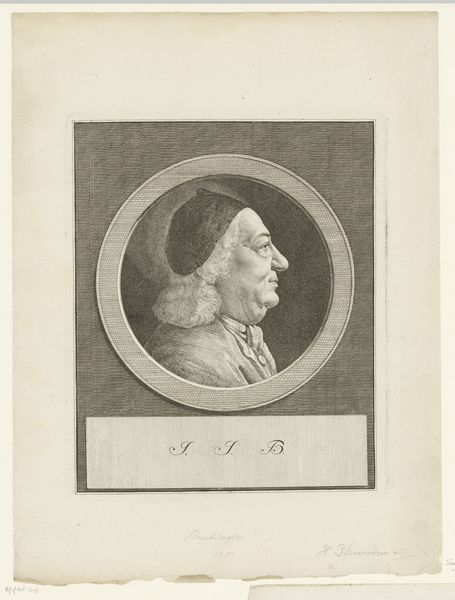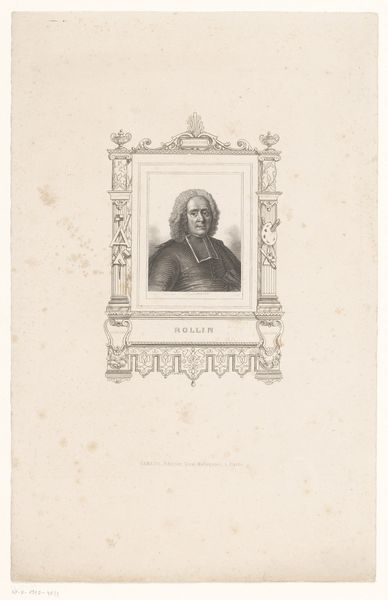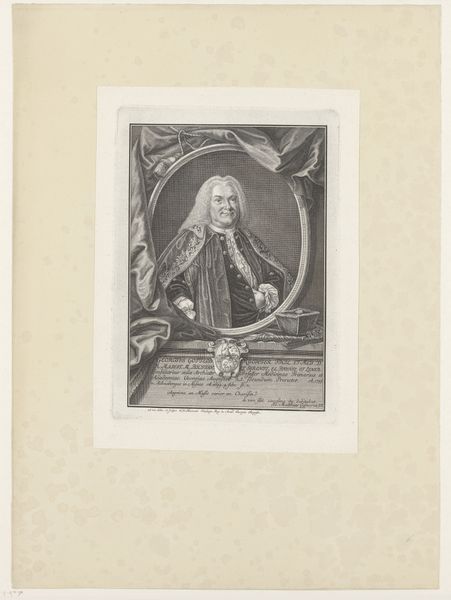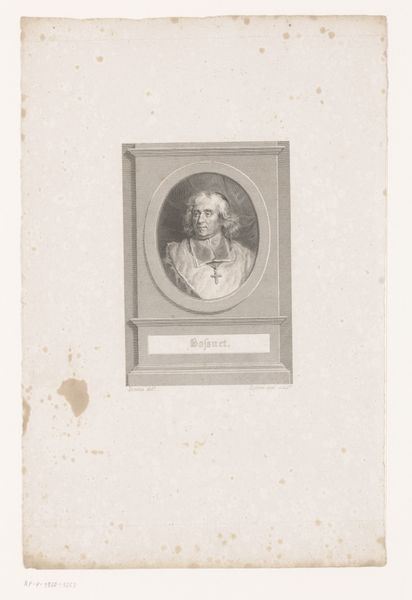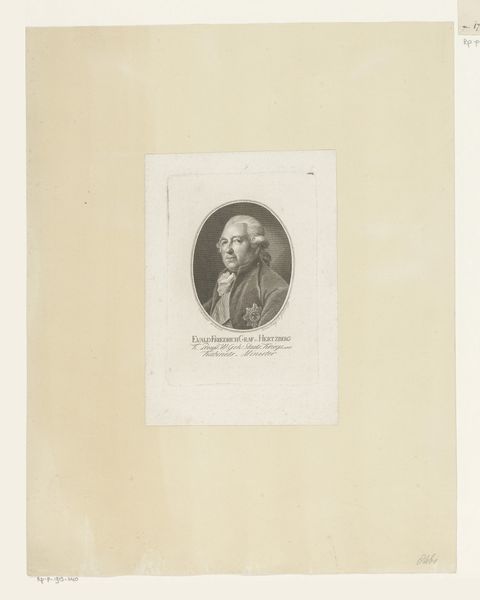
Drie portretten van koning Frederik Willem III van Pruissen 1797 - 1880
0:00
0:00
print, engraving
#
portrait
#
neoclacissism
# print
#
history-painting
#
academic-art
#
engraving
Dimensions: height 230 mm, width 163 mm
Copyright: Rijks Museum: Open Domain
Curator: Immediately, I'm struck by how crisp this engraving is, despite its age. It's neoclassical in style. Editor: Let's delve into it. We're looking at "Drie portretten van koning Frederik Willem III van Pruissen" by Friedrich Wilhelm (I) Meyer, produced sometime between 1797 and 1880. It presents three depictions of the Prussian king: a central portrait and two medallions beneath. What draws you to it, beyond the initial impression? Curator: It's the precision of the engraving itself. You can see the texture in his hair, the details of his uniform... the material skill it takes to achieve that kind of detail using only lines. Also the way the composition plays with shapes, rectangles surrounding the oval. How did someone make it and what did they use? And more interesting yet; why was it reproduced using a low value material and by whom? Editor: That is important but it seems a little devoid of meaning when we forget about the message. It’s difficult to ignore how these portraits – especially the main one – are intended to project an image of power, isn’t it? Think of the era. Revolutions are shaking Europe. Monarchies are scrambling to maintain control by projecting an image of stability and divine right. Curator: Absolutely. It’s about power, but I'm interested in HOW that power is constructed through material means. What are the mechanics behind mass reproduction here? Editor: Let's also not forget the socio-political context. Frederick William III, who lead Prussia through the Napoleonic Wars, projected an image of leadership while simultaneously enacting policies that severely limited freedoms of the press and expression, effectively crushing dissent under the guise of order. The choice to produce three portraits, and to widely share these low quality objects may have impacted what the wider populous perceived. Curator: Precisely, the printing allowed for a wider dissemination of the Royal Brand image throughout a class system and a state based entirely on a manufacturing project of authority. By dissecting this material process and production, it is evident it does indeed have deep, very deep meaning! Editor: Looking at this piece then reminds us of how images of power are carefully constructed and circulated to shape our perceptions. Its function goes hand in hand with form, media, technique. Curator: Yes! Both have great import. What's been illuminated here is that an object as “simple” as an engraving reveals complex interplay between artistry, social control, the political class system, and material manipulation of images. Editor: Absolutely. Analyzing them, then, can grant some clues to how society worked when it was reproduced.
Comments
No comments
Be the first to comment and join the conversation on the ultimate creative platform.
